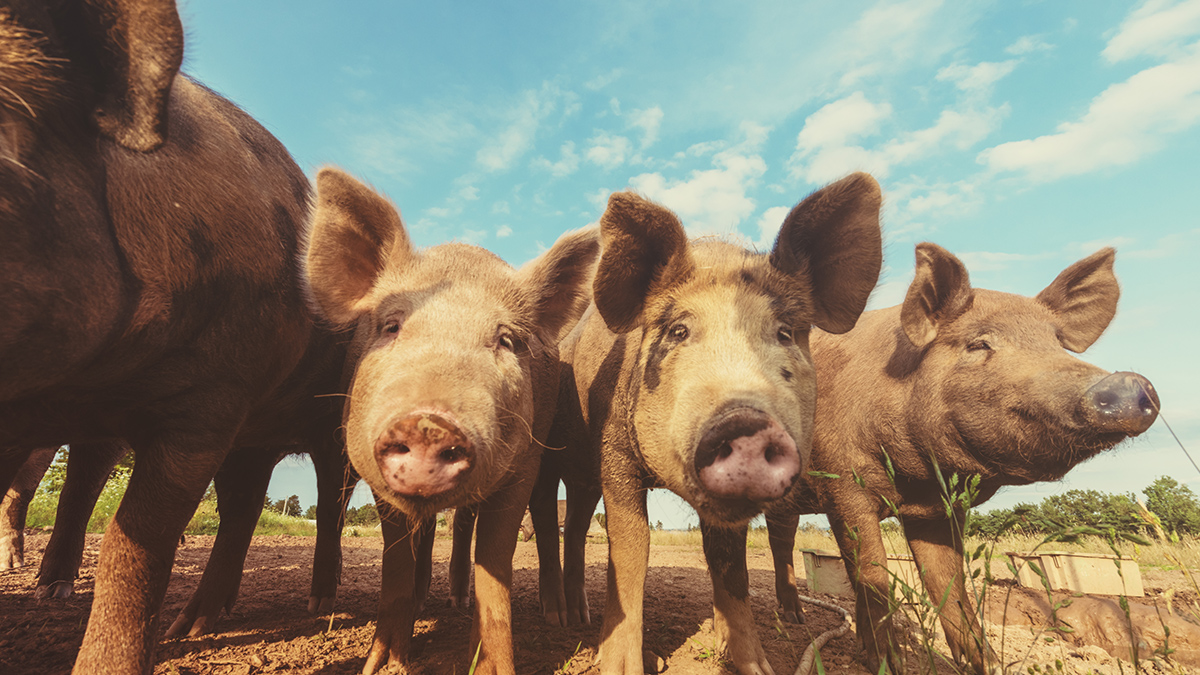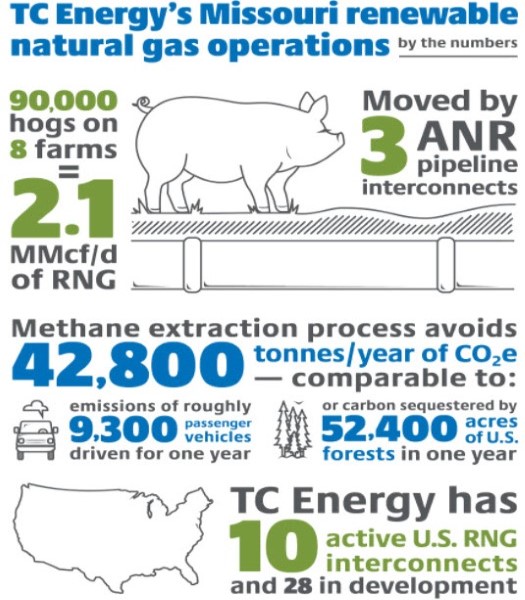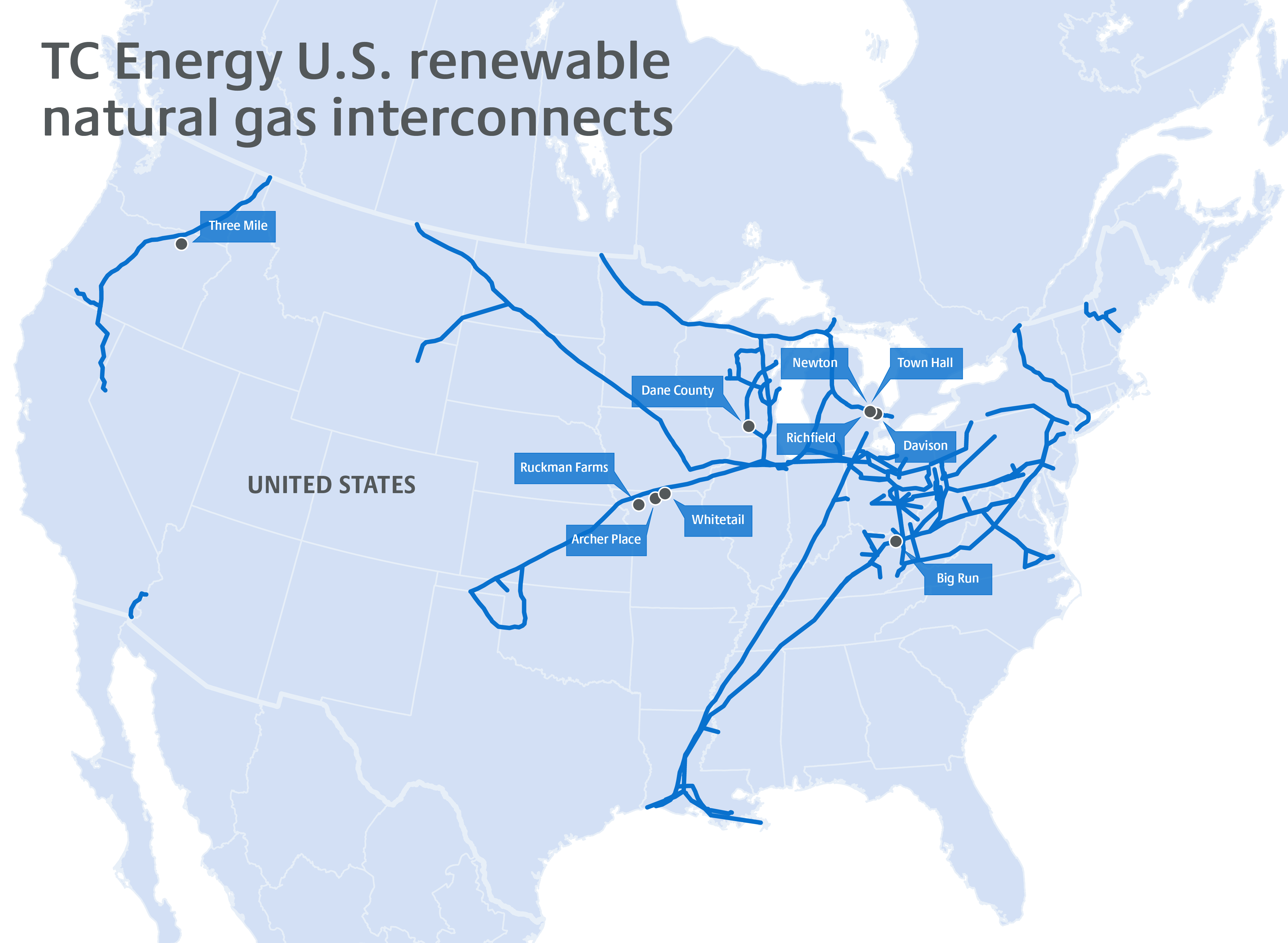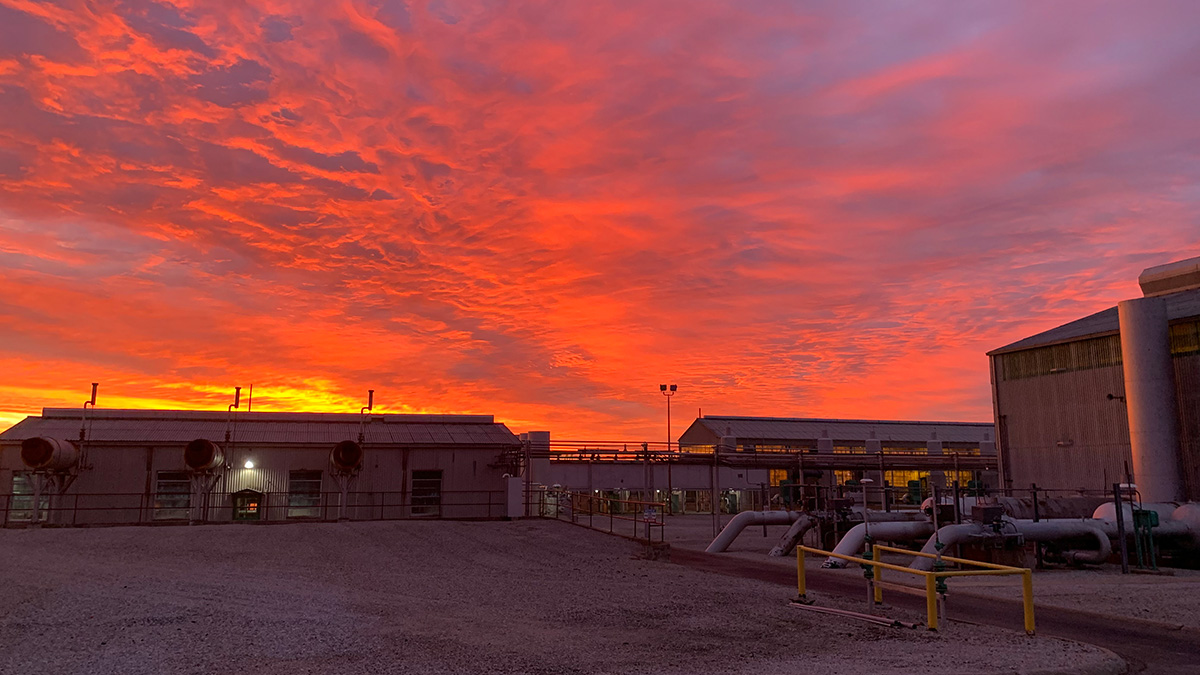Apr 8, 2024
Moving energy from hog waste in Missouri
Posted by TC Energy
We continue to expand our U.S. renewable natural gas (RNG) interconnect footprint as part of our commitment to grow and optimize our business and operate safely, reliably, and sustainably.
We recently placed into service our third RNG interconnect in Missouri, one of several RNG interconnect projects operating on the company’s extensive U.S. natural gas system.
At full ramp up, the three interconnects in Missouri will flow a combined 2.1 million cubic feet per day of RNG produced from hog waste, avoiding some 42,800 tonnes per year of CO2 equivalent—comparable to the emissions of roughly 9,300 passenger vehicles driven for one year or carbon sequestered by 52,400 acres of U.S. forests in one year.
The latest to enter service is the Whitetail interconnect in the far northern portion of the state. Each Missouri interconnect feeds our ANR Pipeline system with high-purity methane—the same methane we have transported across our pipeline footprint for decades. That methane is eventually used as fuel to generate electricity, heat homes, cook meals, and power industry.
Eight farms with the capacity to house some 90,000 hogs supply the RNG to three interconnects. St. Louis-based Roeslein Alternative Energy is responsible for implementing the technology that captures the RNG and cleans the gas before injecting it into the pipeline system.
“For every British thermal unit [BTU] we’re selling, that's a BTU of methane that's not being emitted to the atmosphere,” said Chris Roach, President of Roeslein.

How it works
Hog waste on each farm is collected into a three-to-four-acre covered lagoon. Microbes break down the waste as part of the anaerobic digestion process, emitting gas that is captured by something of a “tent.”
The captured gas is mostly methane and carbon dioxide—generally around 65% CH4 and 35% CO2—with very small amounts of water vapor and other gases part of the mix as well. A major difference between the gas captured from the animal waste vs. gas extracted from thousands of feet beneath the Earth’s surface is the relative purity of the captured gas.
However, the captured gas still enters a purification process to ensure only pipeline-quality methane enters the ANR system. The resulting RNG is appealing to customers who seek carbon-neutral energy.
Including startup of the Whitetail interconnect, we have doubled our U.S. RNG interconnect capabilities in 2021 to 4 billion cubic feet per year. Another 30 billion cubic feet per year of projects are in development.
These projects are located throughout the country and transport RNG produced from hog, cow, and chicken waste as well as from landfills. As of August 2021, TC Energy has 10 active RNG interconnects across its U.S. footprint and another 28 in development.
“TC Energy is excited about the relationship we have built with Roeslein and look forward to working with them again on future RNG projects,” said Roger Williams, Director of Business Development for TC Energy’s U.S. Natural Gas organization. “TC Energy embraces the growing role RNG will play in our industry in the coming years. We will continue exploring ways to optimize our existing U.S. footprint safely and sustainably.”
Our involvement with the RNG CoalitionThis year, TC Energy joined the RNG Coalition at the leadership level, reinforcing our approach that the future is one of natural gas and renewables working together. TC Energy is a sponsor this September for RNG Works, an industry conference to educate on, demonstrate, and promote industry best practices for RNG. The RNG Coalition’s shared industry mission and Sustainable Methane Abatement and Recycling Timeline (SMART) initiative are as follows:
|




